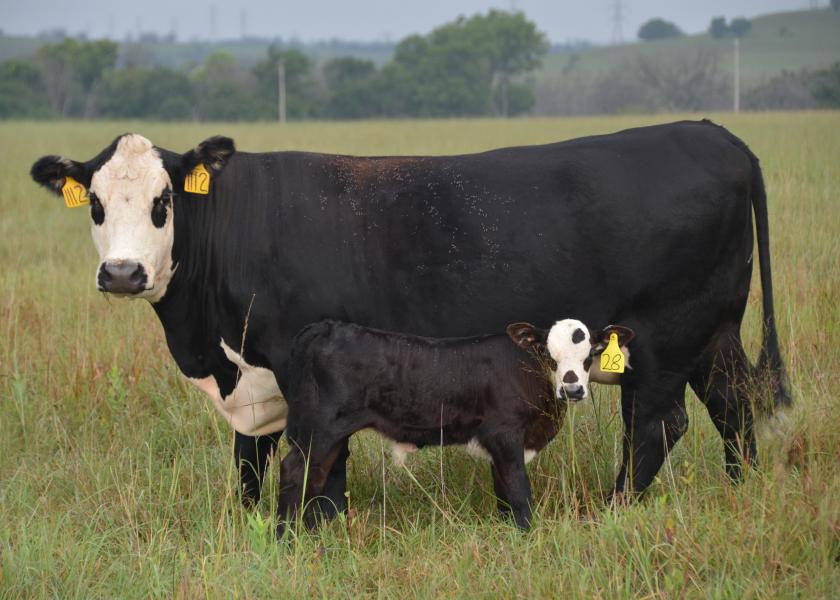Glenn Selk: Poor Temperament Adversely Affects Profit

October is a traditional weaning and culling time for spring-calving herds. Weaning for value-added calf sales is already underway. This is a time when producers decide which cows no longer are helpful to the operation and which heifer calves will be kept for future replacements. Selecting against ill-tempered cattle has always made good sense. Wild cattle are hard on equipment, people, other cattle, and now we know that they are hard on the bottom line.
University of Florida animal scientists recorded disposition scores over two years on 160 Braford and 235 Brahman x British crossbred cows. They wanted to evaluate the effects of cow temperament and energy status on the probability to become pregnant during a 90-day natural breeding season. Cows were scored as 1= calm, no movement to 5= violent and continuous struggling while in the working chute. Also a pen score assessment was assigned as 1= unalarmed and unexcited to 5 = very excited and aggressive toward technician. An exit velocity speed score was measured as the cows exited the working chute as 1= slowest and 5 = fastest. An overall temperament index score was calculated by averaging the chute score, pen score and exit velocity score. Blood samples were analyzed for cortisol concentrations.
Cortisol is a hormone released when mammals are stressed or excited. Increased cow temperament score and elevated plasma cortisol concentrations both were associated with decreased probability of pregnancy. These results suggest that excitable temperament and the subsequent elevated cortisol concentrations are detrimental to reproductive function of cows. These authors concluded that management strategies that improve cow disposition, enhance their immune status, and maintain the cow herd at adequate levels of nutrition are required for optimal reproductive performance. Source: Cooke and co-workers. 2009 Florida Beef Research Report.
Mississippi State University researchers (Vann and co-workers. 2006. Southern Section of American Society of Animal Science) used a total of 210 feeder cattle consigned by 19 producers in a “Farm to Feedlot” program to evaluate the effect of temperament on performance, carcass characteristics, and net profit. Temperament was scored on a 1 to 5 scale (1=nonaggressive, docile; 5=very aggressive, excitable).
The temperament scoring system was similar to that described in the Florida cow study. Exit velocity and pen scores were highly correlated. As pen scores increased, so did exit velocity. As pen score and exit velocity increased, health treatments costs and number of days treated increased, while average daily gain and final body weight decreased. This outcome makes perfect sense. Other studies have shown that excitable temperament can diminish immune responsiveness, with more temperamental calves having a reduced response to vaccination when compared with calm calves.
In the Mississippi study, as pen temperament score increased, net profit per head tended to decline. Pen temperament scores and net profits per head were as follows: 1=$121.89; 2=$100.98; 3=$107.18; 4=$83.75; 5=$80.81. Although feed and cattle price relationships have changed since this data was collected, one would expect similar impacts from the temperaments of cattle under today’s economic situation.
“Heritability” is the portion of the differences in a trait that can be attributed to genetics. The heritability of temperament in beef cattle has been estimated to range from 0.36 to 0.45. This moderate level of heritability indicates that real progress can be made by selecting against wild cattle. Whether we are marketing our calf crop at weaning or retaining ownership throughout the feedlot phase, wild, excitable cattle are expensive to own and raise.
Related stories:
Glenn Selk: Why 45-Day Weaning Is Important







